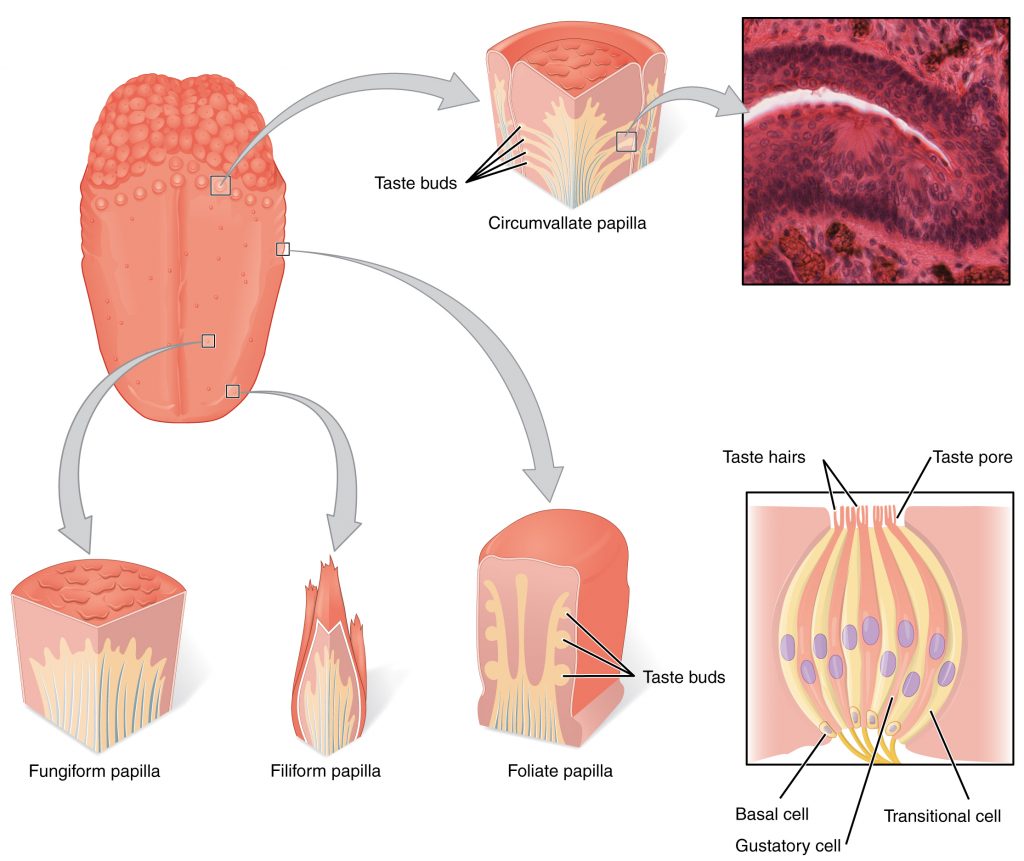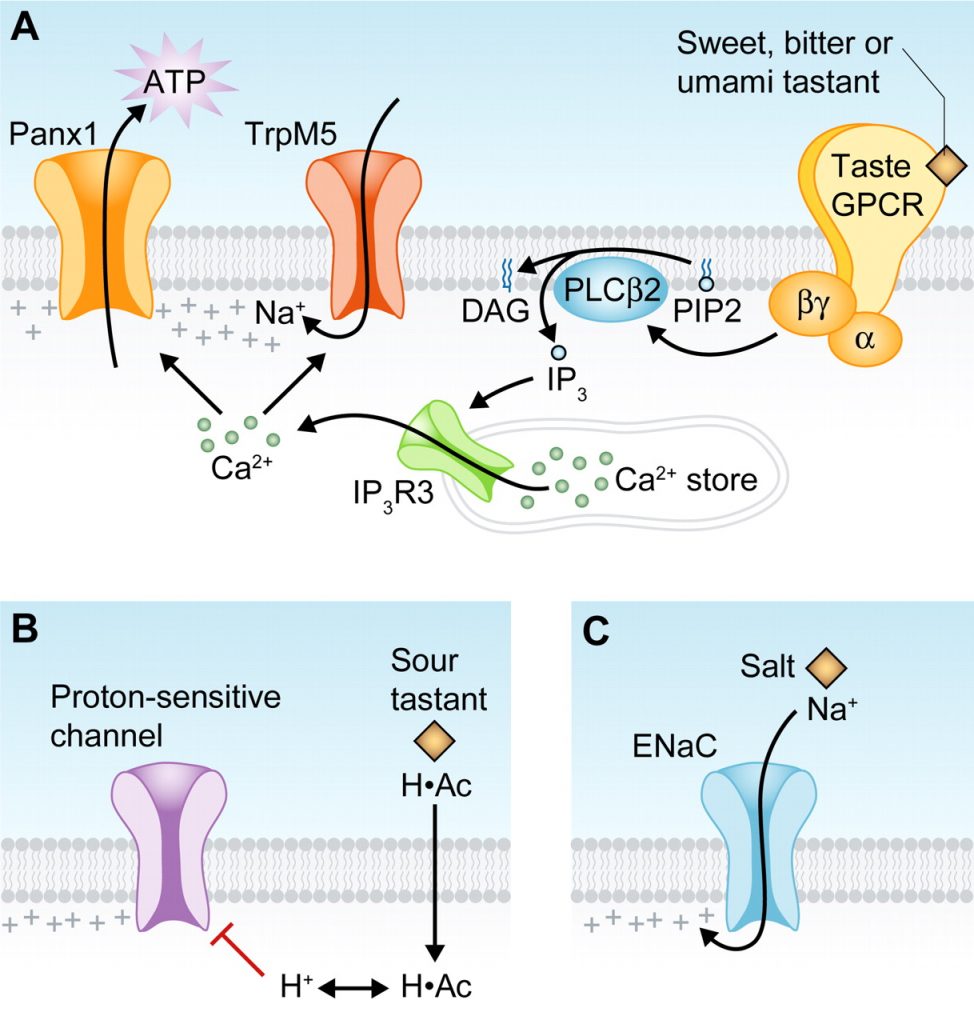When you think of wine, do you wax poetically about the subtle notes of springtime apple blossoms with hints or truffles — or do you just hope that all your friends can’t tell that you secretly like “Two-Buck Chuck” the best?
If you aren’t a wine lover, you may wonder what all the fuss is about. To be honest, that’s me! I don’t get the whole ‘complex notes of black cherry with an earthy plum truffle finish’ thing — it just tastes like wine.
Genetics, of course, explains the differences in how we taste wine. Variations in the taste receptor genes cause us to note different flavors – from bitter to sweet to specific flavors in between.
Taste receptors, genes, and wine:
Let’s dig into the background science on how the different types of taste receptors work – and how your genetic variants impact your ability to detect certain flavors. Then I’ll explain how to check your genetic data from 23andMe or AncestryDNA for these variants.
You probably learned in elementary school about taste being one of the five senses. There are five different categories of flavors that you can taste: salty, sweet, bitter, sour, and umami.
Taste buds on your tongue are made up of groups of taste receptor cells. The bumpy surface of your tongue increases surface area, allowing for lots of taste receptor cells.

Receptors that bind to specific flavor molecules
Zooming in on these taste cells, you will find specific taste receptors on the cell membrane. For example, on a taste bud that primarily detects bitterness, there will be a lot of bitter taste receptors on the cell membrane of each cell. Activating the receptor with the right molecule causes a signal to be sent to the brain via a nerve.
The receptors on the cell membrane of the taste cells are coded for by specific genes. For example, there are 43 different bitter taste receptor genes, all named starting with TAS2R.
The receptor is activated by compounds in the foods that you eat. For example, in broccoli, there is a molecule that fits into and then activates a specific receptor, TAS2R38. That specific receptor only accepts one specific ‘bitter’ molecule – like a lock and key.

You also have specific sweet taste receptors, coded for by the TAS1R family of genes.
Sour, though, is a bit different. Researchers used to think that sour was detected when there were free hydrogen ions available (low pH) and that any of the taste receptors could detect this. More recent research points towards specific potassium channel receptors that are activated at lower pH.[ref]
Tasting wine and activating receptors
Tasting wine – or food – combines the sensory input of all these different receptors at the same time. You can have different molecules binding to several bitter receptors, activating the sour sense, and also binding to a couple of sweet receptors — all within that same swig of wine.
Bitterness in red wines comes mainly from polyphenols. Tannins, a type of polyphenol known for astringency, may be present and activate specific bitter receptors.[ref]
The tannins in wine give rise to part of the mouthfeel as well. The astringent taste of tannins produces sensations in the mouth. These sensations are due to the “tightening and shrinking of the oral surface and puckering sensations of the oral cavity”.[ref]
Why does wine taste differently to people?
The taste receptor genes are highly polymorphic. This means that there are lots of common genetic variants that affect the function of the receptor.
Researchers have discovered forty-three different bitter receptors and multiple sweet receptors. Combine the multiple receptors with variants affecting the function of each receptor to create what your brain receives as the taste.
All these mix together to create very unique individual abilities to taste wines differently.
Why are genetic variants common in taste receptors?
Researchers think this gives a population an advantage by having some people who can strongly taste different substances and warn the rest.
Take, for example, a variant in the TAS2R43 gene that causes people to be sensitive to the plant toxins aloin and aristolochic acid. If a few people in a village could taste that substance, they could warn everyone not to eat the plants that contain it. Aloin is a compound in some species of aloe plants that ‘induces bowel movements’ and may be carcinogenic — so it would be good for someone to alert you not to eat that type of aloe![ref]
Fast forward to a modern example: That same TASR43 variant also controls whether the artificial sweetener saccharin tastes bitter to you. About 18% of the population doesn’t even carry a copy of the TASR43 gene.[ref]
Final example: The ability to taste a bitter component of broccoli or Brussels sprouts is mostly due to the TAS2R38 gene. People who cannot taste bitter substances eat more overall servings of vegetables than tasters. The non-tasters can convince the tasters of the benefits of veggie consumption, and the tasters can warn the non-tasters when something is really bitter and possibly toxic.[ref][ref] While bitter tasters may eat fewer veggies, they may have an advantage in that they also are less likely to drink too much alcohol.[ref]
Wine-tasting Genotype Report:
Let’s dig into which genetic variants have been researched and found to impact how wine tastes. Taste receptor variants also tell us who can taste ethanol more strongly – and thus will be less likely to drink a lot of alcohol.
Lifehacks:
Chill the wine – or not?
Temperature affects the taste sense for about 20-30% of the population. These people are called thermal tasters. Thus, for a portion of the population, the taste of wine may also depend strongly on the temperature of the wine.
Try varying the temperature of the wine to see if it makes a difference to you in how it tastes.[ref]
Fun stuff on taste receptor variants:
Related Articles and Topics:
Intriguing Genes: Differences in how we smell things
Take a look at the genetic variants in the odor receptor genes and how they influence one’s response to their environment. (Member’s article)
Lithium Orotate + B12: The bee’s knees, for some people…
For some people, low-dose, supplemental lithium orotate is a game-changer when combined with vitamin B12. But other people may have little to no response. The difference may be in your genes.
ACTN3: Muscle Type Gene
The ACTN3 gene codes for actinin alpha-3, a protein found in the fast-twitch muscle fibers. Some people don’t produce this protein, which changes the composition of their muscles.
Top 10 Genes to Check in Your Genetic Raw Data
Wondering what is actually important in your genetic data? These 10 genes have important variants with a big impact on health. Check your genes (free article).

